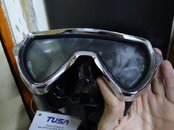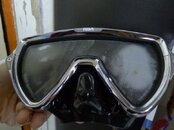plz help.
I got my new mask, but I also got a problem.
Someone told me that the mask is coated with a protective coating for a brand new mask, and users should remove that coating before using. Is it true?
So I fog it purposely, and I found it fog unevenly; i uploaded a photo below. I wonder has it the "good" coating damaged? or just some of the protective coat come off? What should I do next?

I got my new mask, but I also got a problem.
Someone told me that the mask is coated with a protective coating for a brand new mask, and users should remove that coating before using. Is it true?
So I fog it purposely, and I found it fog unevenly; i uploaded a photo below. I wonder has it the "good" coating damaged? or just some of the protective coat come off? What should I do next?






